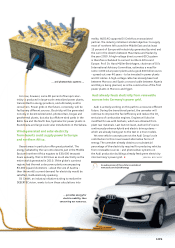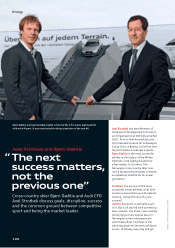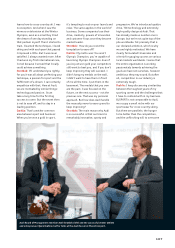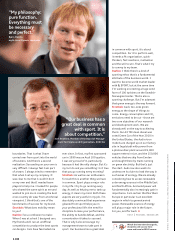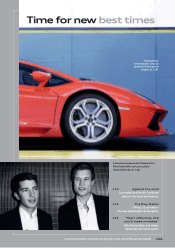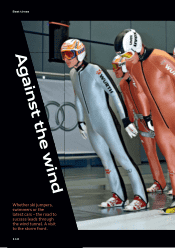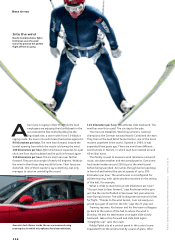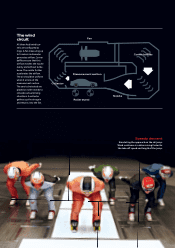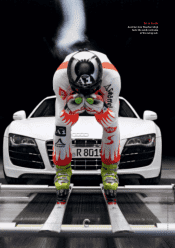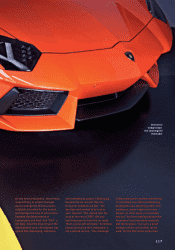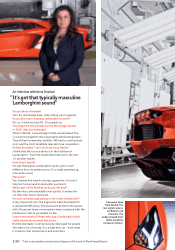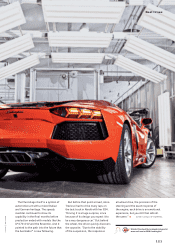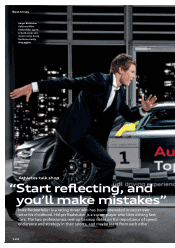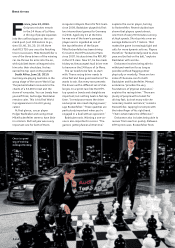Audi 2010 Annual Report Download - page 117
Download and view the complete annual report
Please find page 117 of the 2010 Audi annual report below. You can navigate through the pages in the report by either clicking on the pages listed below, or by using the keyword search tool below to find specific information within the annual report.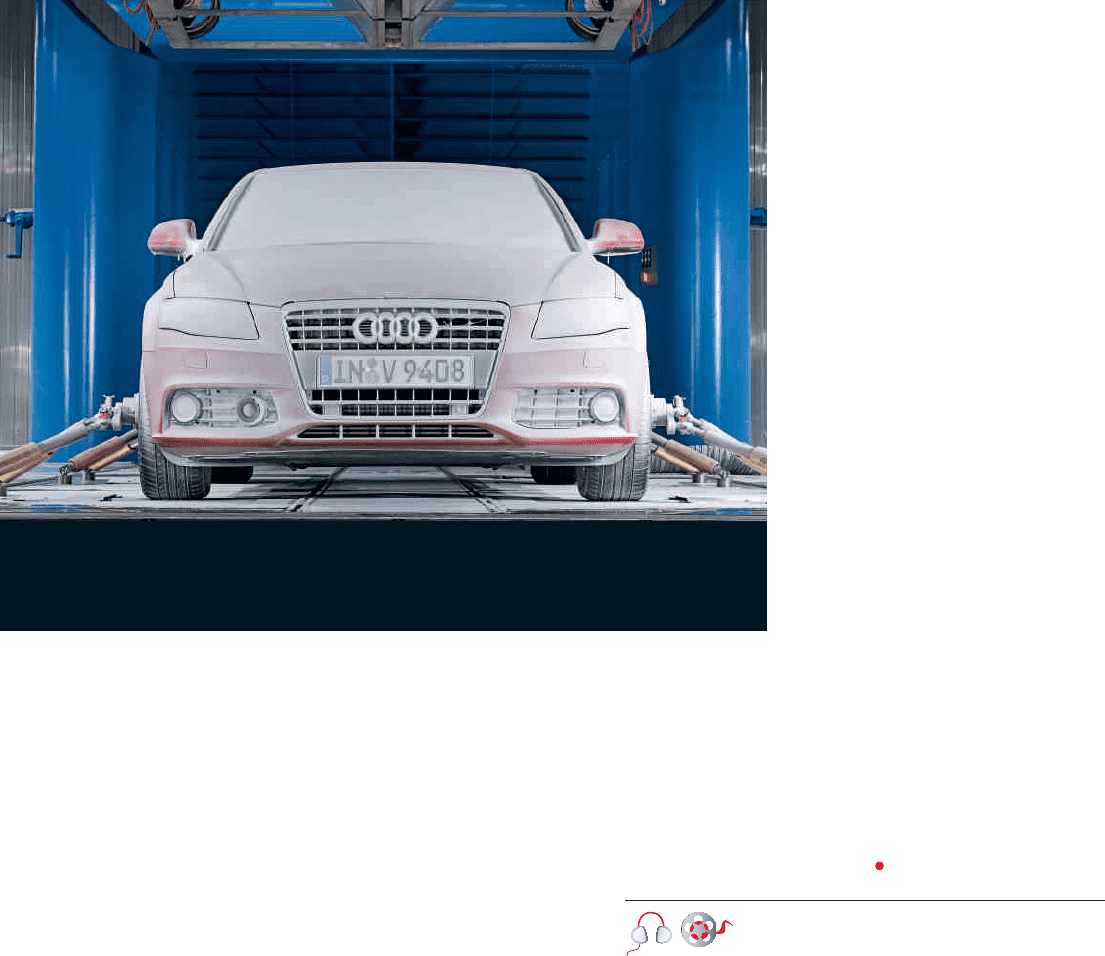
115
Best times
fi ve minutes he presses the black button. The hurricane
subsides. The athletes stumble forward, towards the tunnel
opening. There is not the slightest of breezes – this lull in
the wind means it’s time for a break.
Pyttel has worked as an engineer in the wind tunnel for
three years. He now opens the metal door of the control
room and goes to where the storm was recently raging,
directly into the tunnel opening. The 31-year-old points to
the steel walls and the slots in the fl oor that catch any items
blown away by the wind. Finally, the fi ve-meter-tall turbine
with the 2.6 megawatt motor that had the Nordic Combined
skiers sliding backward.
Audi cars undergo 6,500 hours of testing each year in
the three wind tunnels. The tunnels are used by special
guests the rest of the time. Australian swimmer Ian Thorpe
tested his swim suit here, and Alpine skiers from Germany,
Austria and Switzerland train here almost every year. The
ski jumpers of the German Ski Association leaned into the
man-made wind a few days before the Nordic Combined
skiers. The bob sledders are also scheduled to return soon
from Switzerland.
A train manufacturer also chose the Audi wind tunnel for
testing a model of its latest high-speed train. And, of
course, the Audi DTM and Le Mans racing cars are brought to
the wind tunnel for aerodynamic optimizations to the
chassis and suspension, spoilers and the nose to shave off
the decisive thousandths of a second.
“This is the most diverse job I could ever imagine,” says
Pyttel as he walks past covered prototypes and life-size clay
models of cars. No photos are allowed in this secure area!
The new models of the future are sent to the wind tunnel
four to fi ve years before they are launched; during the
design and development phase, in other words. The newest
section of the facility starts behind the next metal door.
You could call it an oven, but it would be equally correct to
call it a refrigerator depending on when you enter it.
Drains can be seen in the fl oor of the measurement section;
heat lamps are mounted on the ceiling. Weather from
around the world can be recreated in the climate wind
tunnel, which was opened back in 2008. All the way from
Siberian cold at minus 25 degrees Celsius to bone-dry,
55-degree Saharan heat.
At this very moment, an Audi A4 is demonstrating that
it can free windows from a millimeter-thick layer of ice in
just a few minutes. Pyttel points to the heat lamps on the
ceiling, which produce actual UV light. The engineer explains
that you would get sunburned if you were to stand under
the lamps while they were switched on.
Pyttel continues forward past an
A1 in which mannequins with micro-
phones are sitting. A case for the
acoustics wind tunnel, where wind
noises are recorded inside the car. Every
irritating source of noise is tracked
down here to deliver the ride comfort
expected of a premium vehicle.
There are further tests that enhance
safety. How does a car behave aero-
dynamically at 150 kilometers per
hour? What happens if there is a
sudden gust of wind from the side?
What measures reduce wind resistance
and thus fuel consumption? These are
the types of questions that Pyttel and
his more than 60 colleagues working
in two shifts at the Wind Tunnel Center
have to answer.
But these questions will have to
wait this afternoon. Right now it’s the
Nordic Combined team’s turn. Next
training session. Kircheisen is hanging
from two ropes as his coaches pull
him up under the ceiling. Facing into
a strong headwind, he is supposed to
simulate the fl ight following takeoff
from the hill. A ski jumper normally
lands in the snow after no more than four or fi ve seconds. In
the wind tunnel, Kircheisen practices a perfect fl ight lasting
two minutes. “There is nowhere else we can log so many
fl ight miles,” he says.
The man with the red helmet spreads his legs slightly so
that his skis form a large V. “Tense up your body!” says
Kircheisen’s coach. Then he raises his hand and says, “Go!”
In the control room Pyttel presses the black button again,
and the next storm breaks out. STEPHAN SEILER
Siberian cold: Wind Tunnel staff test the heating and air conditioning system
of an Audi A4 at an outside temperature of minus 25 degrees Celsius.
Watch the German ski jumpers in the Audi Wind Tunnel
Center at: www.audi.com/ar2010/windtunnel


